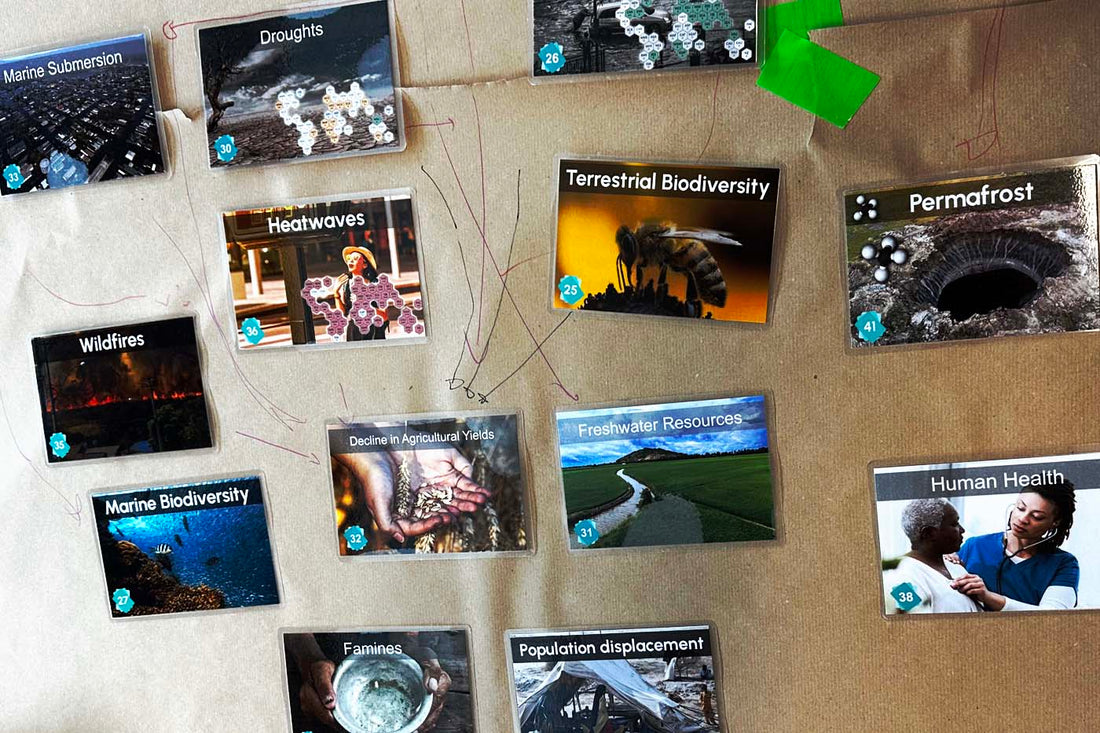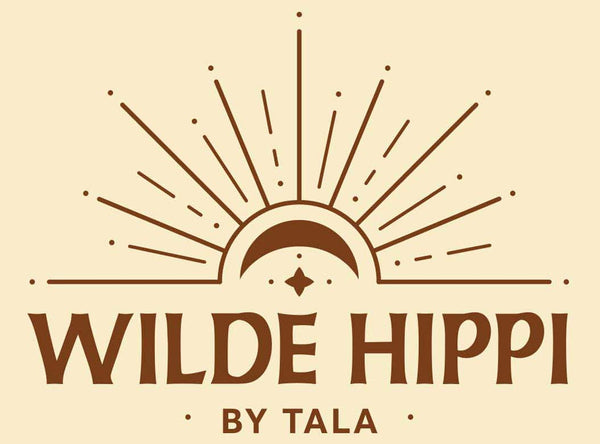
Sustainable Fashion Education and Climate Fresk: Rethinking How We Learn
Share
How Climate Fresk Shapes Circular Fashion Learning
How do we learn best when faced with a crisis as complex as climate change? In February 2025, I found one answer at UWC during a Climate Fresk workshop. The session replaced passive listening with active learning, asking participants to build knowledge together by linking causes and consequences through visual cards. What emerged was not a lecture but a dialogue, a shared act of constructing meaning from science that can otherwise feel remote or overwhelming.
This approach offers valuable lessons for fashion education. Just as the workshop revealed connections between emissions, ecosystems and human activity, so too must fashion learning environments highlight the links between production, consumption and regeneration.

Why Climate Literacy is Essential for Sustainable Fashion Education
Climate change is not a distant abstraction. It is the result of industrialisation, deforestation and the extraction of fossil fuels, processes that have defined the modern economy. These drivers release greenhouse gases, disrupt planetary systems and accelerate global warming. The effects are tangible: extreme weather, biodiversity loss and instability in food and water supplies.
For those of us involved in sustainable textiles or teaching fashion sustainability courses in Singapore, this knowledge is a starting point rather than an optional extra. Suppose learners do not clearly grasp environmental realities. In that case, learners disconnect concepts such as regenerative textiles education or eco-conscious fashion from the challenges these ideas aim to address. Climate literacy provides the foundation for fashion education.
Collaborative Learning in Fashion Sustainability Workshops
The strength of Climate Fresk lies in its method. Participants work in groups, discussing and debating while arranging visual cards that map the chain reactions of climate change. In this way, they build knowledge actively and collectively.
This approach can inspire fashion education. Educators can adapt it to sustainable design workshops in Singapore and textile outreach programmes, guiding students to trace fashion’s whole production process from soil to soil. By working collaboratively, students do more than absorb information: they see the problems within the supply chain with clarity, and they recognise their own role in shaping solutions.
The outcome goes beyond greater understanding. Collaborative learning develops a stronger sense of responsibility, as each participant begins to see their role in the broader system. In the context of fashion education, this means students do not only learn about fibres, fabrics or finished garments in isolation; they come to understand how choices at every stage, from soil health and fibre cultivation to manufacturing, distribution, use and eventual return to the earth, are interconnected. By tracing these links together, learners gain both the knowledge to identify problems within the supply chain and the agency to imagine regenerative alternatives.
Regenerative Design Thinking in Fashion Education
The workshop reminded me that we must understand systems before we design solutions. As someone exploring regenerative fashion, I often discuss circularity, slow fashion and the use of natural fibres in regenerative fashion. Yet these ideas only gain meaning when placed within the broader context of climate, culture and economy.
Similarly, fashion sustainability workshops begin by mapping interconnections: how growers cultivate fibres, how makers construct garments, how consumers circulate them and how communities return them to, or disrupt, the earth. When learners see fashion as part of a system, they are better equipped to develop strategies that repair rather than exploit.
This realisation is why I created Thread:Ed – Fashion Education for a Better Future, to bring together resources that help us rethink fashion from soil to soil. It nurtures regenerative design thinking in fashion, encouraging learners to move beyond refining practices within the growth model and instead to reimagine the framework in which fashion operates.
Community Workshops and Sustainable Fashion Outreach in Singapore
Another lesson from Climate Fresk is accessibility. No prior expertise is required to participate, and facilitators do not need to be academics. This openness has allowed the programme to spread into schools, workplaces and communities across 167 countries.
Fashion education can follow a similar path. Community workshops on sustainable fashion, together with outreach programmes and eco-friendly lifestyle initiatives in Singapore, demonstrate how educators and participants share knowledge beyond formal institutions. When communities embed education in everyday settings such as markets, libraries and neighbourhood spaces, they make it part of collective culture rather than a specialist pursuit.
From Fashion Education to Eco-Conscious Action
The scale of Climate Fresk is striking: more than two million participants worldwide, supported by nearly 90,000 facilitators in over 45 languages. The scale of participation demonstrates the widespread accessibility of education.
Now, imagine applying this model to the fashion industry. If sustainable fashion education could reach similar numbers, the visibility of ethical fashion brands in Singapore, sustainable fashion markets in Singapore and eco-friendly fashion innovation would expand dramatically. In such a context, slow fashion would no longer appear niche but instead reflect a mainstream cultural shift.
Practical Pathways: Circular Fashion Learning Resources in Singapore
Educators can adapt the Climate Fresk model in a structured fashion, learning:
Join in – Take part in a fashion sustainability workshop in Singapore or explore circular fashion learning resources.
Share knowledge – Organise community workshops in Singapore in schools, workplaces or neighbourhoods.
Spread awareness – Support sustainable fashion events in Singapore, promote ethical fashion labels, and introduce others to sustainable products in Singapore.
Each of these steps is modest on its own, but together they create momentum.
Reduce, Reuse, Recycle: Rethinking Fashion in Singapore
As part of this broader conversation on education and sustainability, I explore how communities can rethink fashion at a local level. Reduce, Reuse, Recycle: Rethinking Fashion in Singapore reflects on the role of second-hand clothing, upcycling and clothing rental in shifting habits away from fast fashion. These practices show how practical choices can reduce waste while reshaping cultural attitudes towards consumption. Follow the link for more information.
Wilde Reads – A Sustainable Little Library
Alongside fashion, books and storytelling play a vital role in shaping sustainable futures. Wilde Reads – A Sustainable Little Library is a project I am developing as a free knowledge-sharing station. The vision is simple: a place where people can swap books, join community book clubs, share reviews, and gather for storytelling corners or talks from invited speakers. It is still in progress, but I hope it will evolve into a welcoming space where knowledge circulates freely, sparking curiosity and fostering connections. Follow the link for more information.
I appreciate you taking the time with this post and visiting Wilde Hippi. Please share your thoughts in the comments, as your voice helps shape this platform.
Tala 🌿✨
